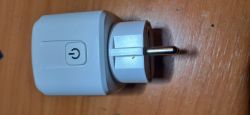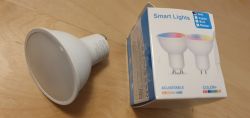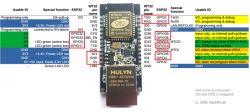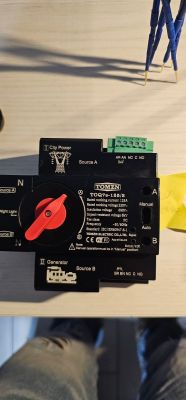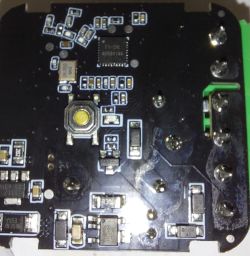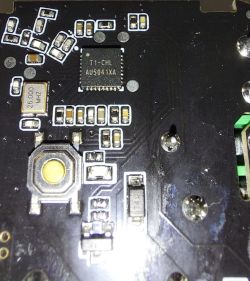I needed to make WiFi control for a room heater.
For this, I decided to use a ready-made WiFi relay module from Aliexpress, having slightly modified it.
I planned to add a 18b20 sensor, and an output to a solid-state relay in slow PWM mode, 5-10s(0.2-0.1Hz).
Let's leave the script out of the equation for now, and run into the main thing - the PWMFrequency command does not work at all - no matter what argument I set, 50, 100, 0.5, the PWM pin frequency remains 1.99998 kHz
The duty cycle is adjusted by a slider via the web
Maybe I'm doing something wrong?
What is the range of PWM frequency adjustment?
You can probably make a loop in the script and use variable delays to switch the pin, but this is somehow not Feng Shui
Chipset: BL602
pin 17 - PWM
/autoexec.bat
PWMFrequency 25
If there are any difficulties, I will have to write everything again through the Arduino IDE on the ESP32C3 - but there will be no beautiful and convenient web...
P.S. !!! The command works on the BK7231! But the minimum frequency is 1Hz...
For this, I decided to use a ready-made WiFi relay module from Aliexpress, having slightly modified it.
I planned to add a 18b20 sensor, and an output to a solid-state relay in slow PWM mode, 5-10s(0.2-0.1Hz).
Let's leave the script out of the equation for now, and run into the main thing - the PWMFrequency command does not work at all - no matter what argument I set, 50, 100, 0.5, the PWM pin frequency remains 1.99998 kHz
The duty cycle is adjusted by a slider via the web
Maybe I'm doing something wrong?
What is the range of PWM frequency adjustment?
You can probably make a loop in the script and use variable delays to switch the pin, but this is somehow not Feng Shui
Chipset: BL602
pin 17 - PWM
/autoexec.bat
PWMFrequency 25
If there are any difficulties, I will have to write everything again through the Arduino IDE on the ESP32C3 - but there will be no beautiful and convenient web...
P.S. !!! The command works on the BK7231! But the minimum frequency is 1Hz...



